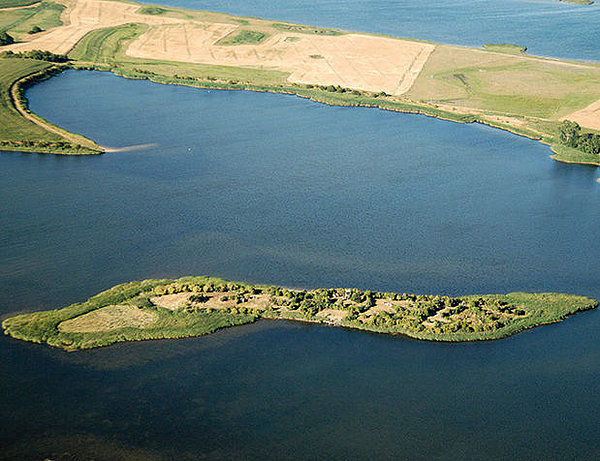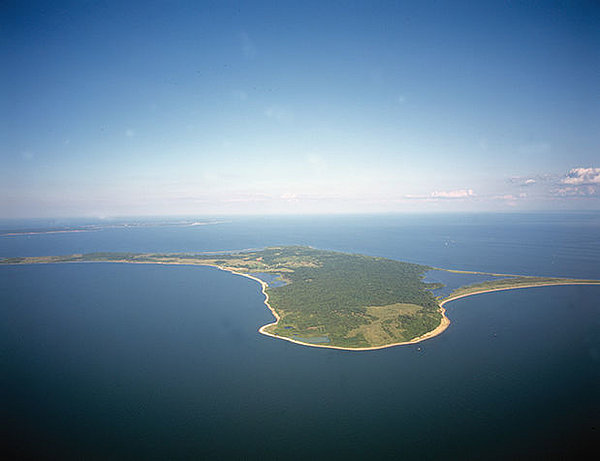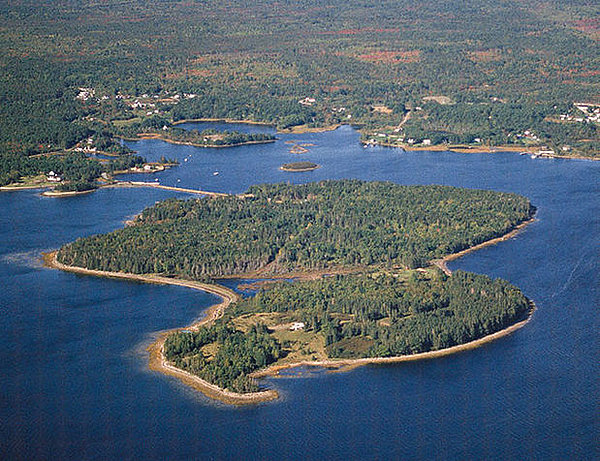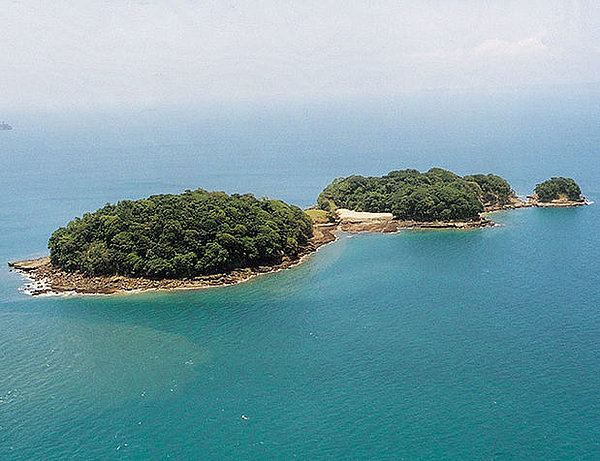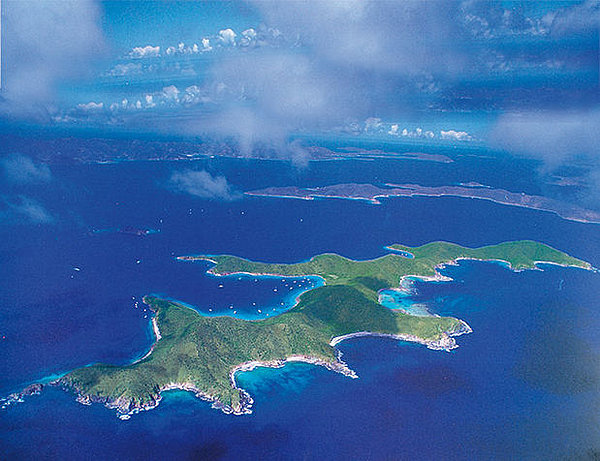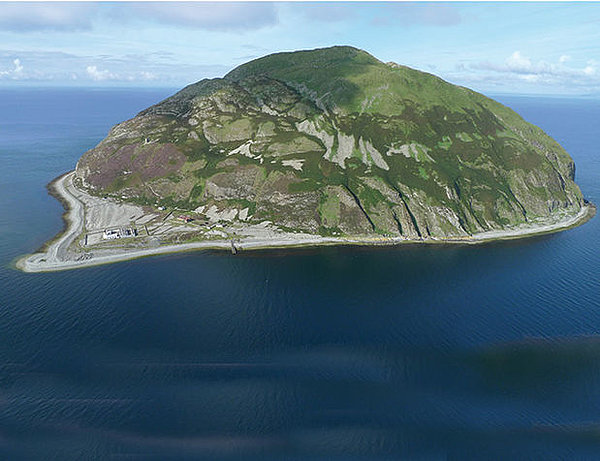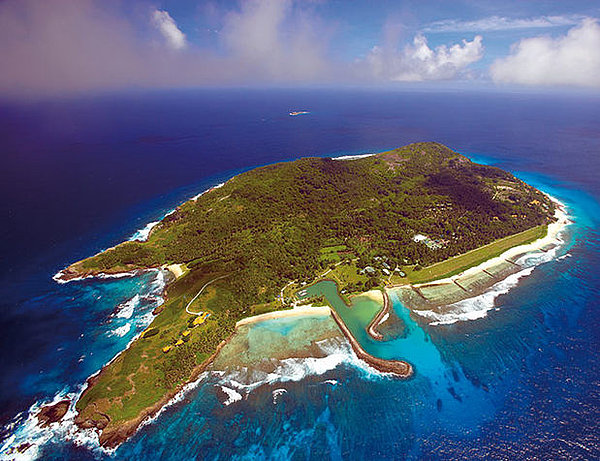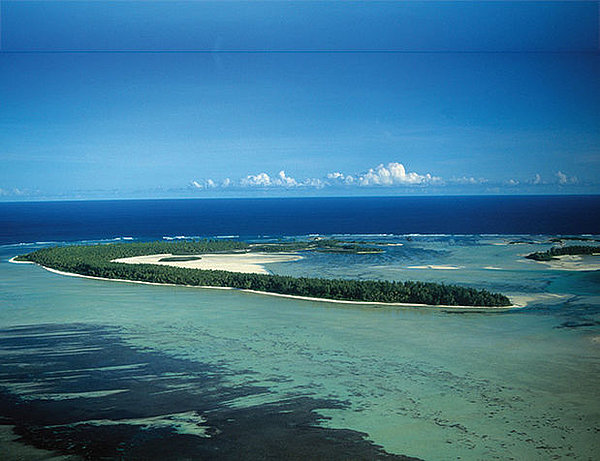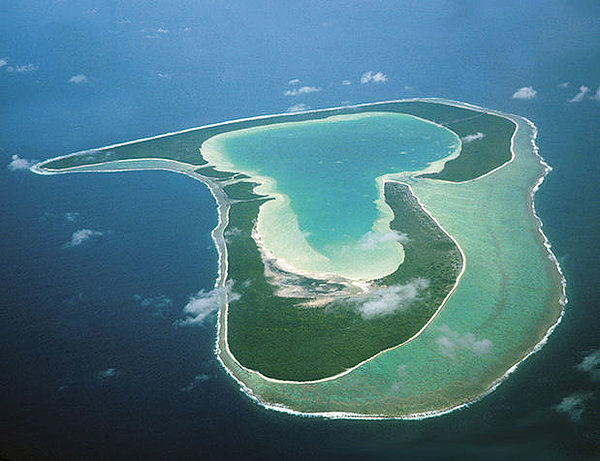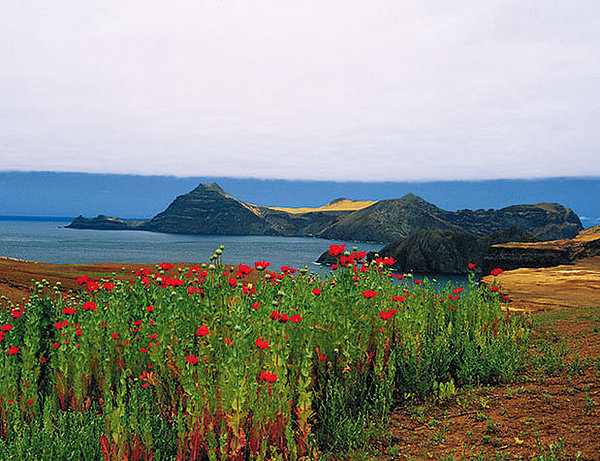Top 10 Treasure Islands
The Tollow, Anno 1401 in Germany, Störtebeker’s Golden Grave
Tollow, a small island in the bay of Maltzien on the island of Rügen (Baltic Sea) is said to be the last resting place of the famous German pirate Klaus Störtebeker who was executed in Hamburg in 1401. According to legend, Störtebeker appeared as a ghost in Hamburg after he had been decapitated. In order to put an end to this, his body was taken to the uninhabited island of Tollow where he continued to haunt the island.
His grave is said to be luxurious. As legend has it, he rests in a golden coffin to which a golden chain is tied which is said to sometimes rise to the water’s surface.
Störtebeker’s grave has never been found, but there exists a rumour that there is always one person who knows where this place is. In every generation, a fisherman from one of the neighbouring coastal villages is said to keep this secret. However, nobody knows the identity of the present insider!
The Tollow, Anno 1401 in Germany, Störtebeker’s Golden Grave
Gardiners Island, Anno 1699 in New York State, USA
Gardiners Island is a small island in eastern Suffolk County in the U.S. state of New York, an island off Manhattan, owned to this day by the Gardiner family. In 1699, the pirate Captain William Kidd stopped at the island while sailing to Boston in an attempt to clear his name. With the permission of the proprietor, Mrs. Gardiner, he buried the treasure in a ravine. In return, he rewarded the owner for her efforts with a piece of cloth interwoven with gold and with a legendary threat: “If I call for it and it is gone, I shall take your head, or that of your son.”
The booty included gold dust, bars of silver, Spanish dollars, rubies, diamonds, candlesticks, and porringers. Mr. Gardiner kept one of the diamonds which he gave to his daughter. A plaque on the island marks the spot but it is on private property.
Kidd started his career as a pirate with a legal buccaneer licence provided by the British East Company. This contract, however, did not turn out to be profitable, and Kidd changed sides. Finally he captured the British vessel. Upon his return to New York he was arrested and deported to England where he was sentenced to death. Officially, his treasure was retrieved, but many people continued digging in the hope of finding it.
Gardiners Island, Anno 1699 in New York State, USA
Oak Island, Anno 1795 in Nova Scotia, Canada, The Unknown Treasure
For more than 200 years, investigations have been carried out into this mystic island in Mahone Bay. Nobody has ever solved this mystery, but there have been many excavations on the island in the hope of revealing the truth of this world class secret. Numerous legends surrounding this treasure have turned this island into a myth. Tradition has it that a 16-year-old woodcutter, Daniel McInnis, once found a man-made hole in the ground when visiting the island. He believed he had found the hiding place for a treasure. During more than 10 projects, many people tried to dig out the treasure.
Since the eighteenth century, excavations have continued on the island. Even the later US president, Franklin D. Roosevelt, came to the island with a group of treasure hunters in 1909, however, without any noteworthy findings. There are numerous speculations as to which treasure is located on Oak Island. Among them are:
- The Pirate Treasures of Captain Kidd and Francis Drake
- The Jewels of the French Queen Marie Antoinette
- The Holy Grail, hidden by Templars
- The War Chest of the Britons during the War of Independence
- The Manuscripts of Francis Bacon
In the end, the treasure of Oak Island is and shall remain a mystery.
Oak Island, Anno 1795 in Nova Scotia, Canada, The Unknown Treasure
Isla de Coco, 1820 in Panama, The famous treasure of Lima on Cocos Island
The treasure of Lima is a treasure which was reputedly removed from Lima, Peru in 1820 and never recovered. Captain William Thompson was ordered to ship the treasure of the church of Lima in his brig, the Mary Dear, to Mexico. Capt. Thompson was not able to resist the temptation of the treasure, thus killed the passengers and navigated with his crew to Cocos Island where he buried the treasure. He died in 1844 in Canada and beforehand, he had revealed the location of the treasure to the certain Mr. Keating. Hundreds of treasure hunters have travelled to Cocos Island in Costa Rica in an attempt to unearth the treasure of Lima. However nobody ever succeeded, not even the most notable treasure hunter, the German August Gissler, who lived on the island from 1889 to 1908. In the 1990’s, Vladi Private Islands offered Cocos Island in Panama for sale and received a message from a Panamanian historian advising us not to sell the island for a few hundred thousand dollars, as it would be worth at least USD 60 million! Vladi Private Islands then employed the services of the late treasure expert William S. Crooker (who also wrote a book on the treasure of Oak Island in Nova Scotia, Canada). Mr. Crooker travelled to Panama, studied the history of both islands and in particular researched the maps. He was able to identify identical cartographic works and informed us that the lost treasure of Lima may indeed be buried on Cocos Island in Panama!
So the question remains - was the treasure buried on Cocos Island in Panama or just across the border on Cocos Island in Costa Rica? There has yet to be an excavation on Cocos Island in Panama.
In 2004, Vladi Private Islands sold the island to an English lady lawyer.
Isla de Coco, 1820 in Panama, The famous treasure of Lima on Cocos Island
Norman Island, Anno 1883 in the British Virgin Islands, Stevenson’s Treasure Island - The Ultimate Legend
No other story, historical nor fictional, has ever shaped the collective idea of the “treasure island” as much as Robert Louis Stevenson’s classic book for young people dated 1883. In the book, the typical features appear such as the one-legged pirate, the talking parrot or the map with the red cross.
Stevenson generously “borrowed” these ideas from other authors such as Daniel Defoe, Edgar Allan Poe and Washington Irving. The story of his treasure island started with a map, which Stevenson drew for his stepson during a holiday in the Scottish high moor. The map featured an island with bays, harbour places, forests, mills and ruins and an offshore island named Skeleton Island.
Norman Island in the British Virgin Islands served as a model for Stevenson’s fictional treasure island. The details of this map inspired major parts of the novel, which was to become Stevenson’s commercial breakthrough after many fruitless attempts as an author of travelogues. Before going to print, however, the treasure map was misplaced. The map which is shown in almost all issues of the book to date, is a reconstruction which Stevenson had made up with great efforts from the details mentioned in the novel.
Norman Island, Anno 1883 in the British Virgin Islands, Stevenson’s Treasure Island - The Ultimate Legend
Ailsa Craig, Anno in the 17th century in Scotland
Ailsa Craig is an iconic island, located in the outer Firth of Clyde in Scotland, not far from Glasgow. Traditionally, landing on the island has not always been an easy matter. It is quite exposed but once on the island, its striking beauty is evident.
A rumour of a hidden treasure on Ailsa Craig has been alive since centuries. This island rises abruptly from the sea to an elevation of 1,110 feet or almost 320 meters - a symmetrical cone of rock thrusting from the sea with 14 km of the Ayrshire coastline. A treasure hidden in this knoll would be very difficult to retrieve, as many parts of the hill are inaccessible, thus making it a fantastic hiding place. So far, nobody has been able to unearth the treasure and therefore its existence remains a mystery.
The owner does not need to be concerned about this, as over the years, the value of the island has risen so high that the value of the treasure would only be fractional in comparison. Today, a beautiful lighthouse and some buildings exist on the island. The lighthouse was built and supervised by Thomas and David Stevenson engineers. Thomas Stevenson was the father of Robert Louis Stevenson, the author of the world famous novel “Treasure Island”, the most important book in the legends of pirates and buried treasure - another link to the famous treasure perhaps?
Ailsa Craig, Anno in the 17th century in Scotland
Frégate Island, Anno 1730 in the Seychelles
Frégate Island used to be the perfect hideout for pirates, who had their hunting grounds along the shipping routes to and from Goa following the keel waters of Vasco da Gama. Their legacy and several pirate sites are still to be seen on Frégate Island - including the Pirates stone with mysterious carvings, the remains of an old fort in Anse Parc and a large excavation hole, where about 15 years ago, intense digging was undertaken in an attempt to find the famous treasure of the notorious pirate, Olivier le Vasseur, a.k.a. Captain la Buse (The Buzzard), who is said to have captured the solid Golden Cross of Goa.
Even James Bond author, Ian Fleming, once dug here in the hope of finding this legendary treasure. Captain La Buse was captured, taken to Saint-Paul, Réunion and hanged on the gallows for piracy on the 7th of July 1730. Legend tells that when he stood on the scaffold, he threw a cryptogram of 17 lines into the crowd while exclaiming: “Find my treasure, ye who may understand it!” Two centuries later, Levasseur’s clue ended up in the hands of a Seychellois lady called Rose Savy, who had the document authenticated at the national library in Paris.
Further information on Frégate Island
Frégate Island, Anno 1730 in the Seychelles
St. Joseph Atoll, Anno 1721 in the Seychelles, Concerning the Treasure of the St. Joseph Atoll
With its secluded position, far from major commercial centres, fishing grounds and shipping lanes, D’Arros and the St. Joseph Atoll have slumbered the sleep of ages since the dawn of time. However, it is precisely their remoteness that attracted the pirates of the day to the islands of the Seychelles archipelago and St. Joseph is no exception.
It is rumoured that certain members of the famous pirate ‘republic’ of Libertalia, which operated out of northern Madagascar in the early 18th century, used the islands as a hideout and the legend of the famous $150 million undiscovered treasure of ‘La Buse’ still lies concealed in northern Mahe. Situated en route between Madagascar and Mahe, St. Joseph would have been a natural staging post for any pirate wishing to ‘hedge his bets’, and rumours persist to this day that at some time during the 1800’s, an extremely valuable treasure was hidden there by a renegade member of Libertalia who had cheated his pirate cronies. Legend has it that the pirate in question, Captain Kidd, was apprehended before he could return to claim it but that he drew several cryptic maps which are still in circulation.
St. Joseph Atoll, Anno 1721 in the Seychelles, Concerning the Treasure of the St. Joseph Atoll
Tupai, Anno 1822 in French Polynesia
According to legend, in 1822, the crew of the Chilean warship „Araucano” mutinied. Not satisfied with just taking over the vessel, the mutineers furrowed the seas of the Peruvian Coast, plundering notably the treasures of the Peruvian churches. The crew then set sail for the South Sea, changing the name of the ship en route. The ship arrived at Huahine where the pirates, often drunk, bragged about having a fabulous stolen treasure on board. The captain stopped at an uninhabited island called Tupai, north of Bora Bora, where, as legend would have it, he buried the treasure. His plan was to sail to Tahiti in order to get rid of the ship that had become a considerable encumbrance. With his hands thus freed, the captain wanted to return to Tupai and recover his gold. He tried to seize another ship but failed. The surviving mutineers managed to flee to Huahine where they succeeded in convincing the missionaries that they were honest. They remained on the island through the years by drifting to the four winds without ever being able to return to Tupai to recover the fruits of their rapine. In 1932, the value of the treasure was estimated at £20 billion sterling.
Around the end of the 19th century an adventurer from Nova Scotia, Canada, named Blackett, finally found the treasure. To assure that there would be no witness to his find, he killed all 12 Polynesian employees on his coconut farm, the graves of whom were discovered later. Consequently, the Queen of Bora Bora forced him to disappear on a fragile boat, never to be seen again, without being able to recover his treasure. One of the later proprietors, Robert Cunningham, returned to his native land Australia after 24 years spent on the atoll. He swore never to have seen the slightest trace of precious metal on the island. In 1998, the Polynesian government became owner of the atoll.
Tupai, Anno 1822 in French Polynesia
Isla Robinson Crusoe, Anno 1715 in Chile
This archipelago is named after Robinson Crusoe (also known as Juan Fernández Island) but perhaps it should have been called Treasure Island. It was discovered by chance on November 22nd, 1574 by the Spanish sailor Juan Fernández, as he was deviated from his planned course. In the 17th and 18th centuries, the island was used as a hideout for pirates. It was also the site of Alexander Selkirk, who was marooned on the island and lived alone for 4 years before being rescued. For centuries, treasure hunters have scoured the island in search of booty which was reportedly buried there in 1715 by Spanish sailor Juan Esteban Ubilla y Echeverria.
International attention came in 2005 after Wagner Technologies, a funding company, found the largest recorded treasure trove: 600 barrels of gold coins and jewels worth about $10 billion (seized from the Incas by Spanish conquistadores). This announcement set off ownership claims. When Chilean authorities claimed the treasure as government property, a standoff developed. Wagner Technologies said it would only disclose the treasure’s precise co-ordinates once the government renounced its claim and that it would donate 60 percent of it to Chilean charities. The Government did not back down and the treasure remains in dispute and unexcavated.
Further information on Isla Robinson Crusoe
Isla Robinson Crusoe, Anno 1715 in Chile
